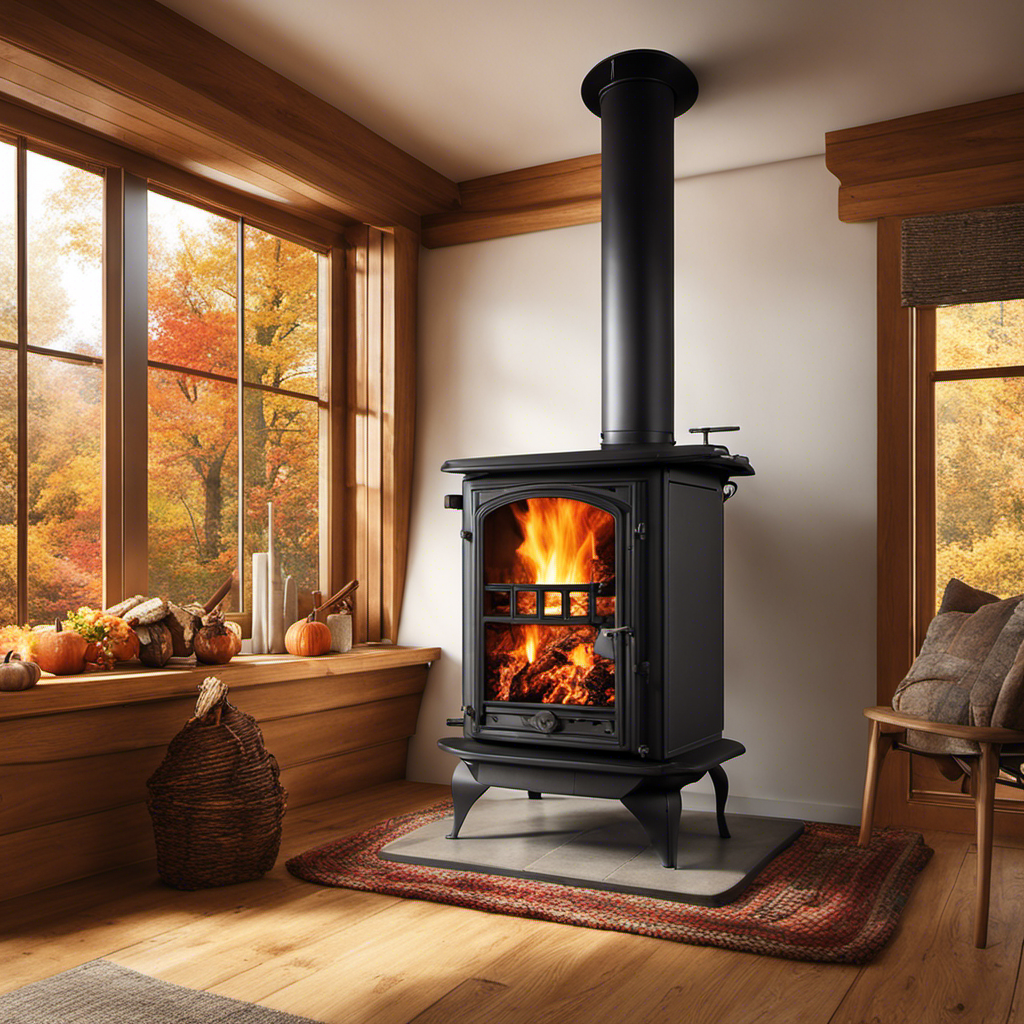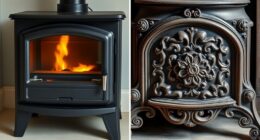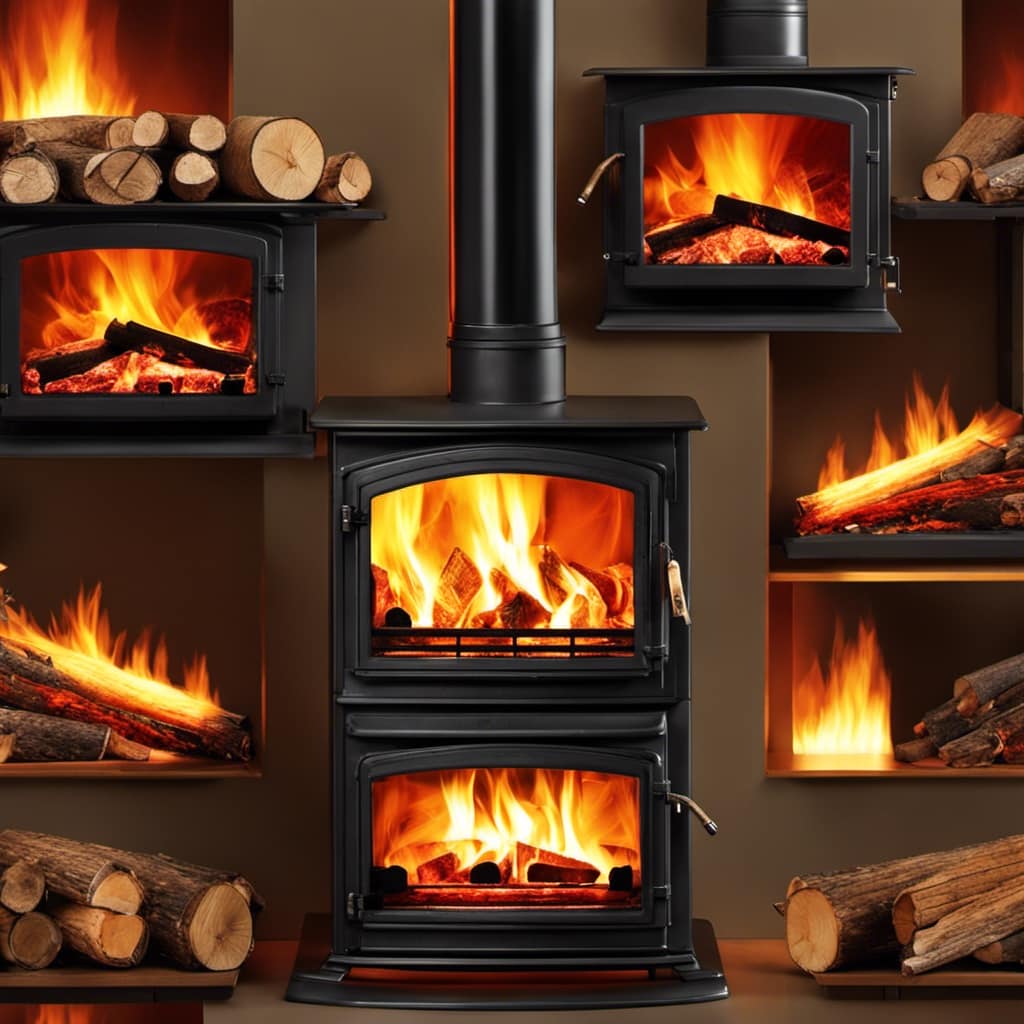
I have always been intrigued by the way a wood stove damper functions. It is fascinating to consider how a basic device like this can regulate the airflow and heat produced by a wood stove. In the following article, I will explore the purpose, parts, and operation of a wood stove damper.
We’ll also explore how adjusting it properly can help regulate the temperature in your home. So, let’s unravel the mysteries of the wood stove damper together.
Key Takeaways
- A wood stove damper controls airflow and regulates temperature inside the stove.
- Adjusting the damper controls the amount of oxygen entering the stove, resulting in a hotter or cooler fire.
- The damper is located in the flue pipe and consists of a metal plate or flap that can be opened or closed.
- Proper use and maintenance of the damper are important for maximizing fuel efficiency and preventing issues like poor draft or smoke leakage.
The Purpose of a Wood Stove Damper
The purpose of a wood stove damper is to control the airflow and regulate the temperature inside the stove. It plays a crucial role in maintaining the ideal conditions for efficient combustion.
By adjusting the damper, you can control the amount of oxygen that enters the stove, thus regulating the combustion process. When the damper is fully open, more air is allowed in, resulting in a hotter fire. On the other hand, closing the damper restricts the airflow, reducing the intensity of the fire and lowering the temperature.
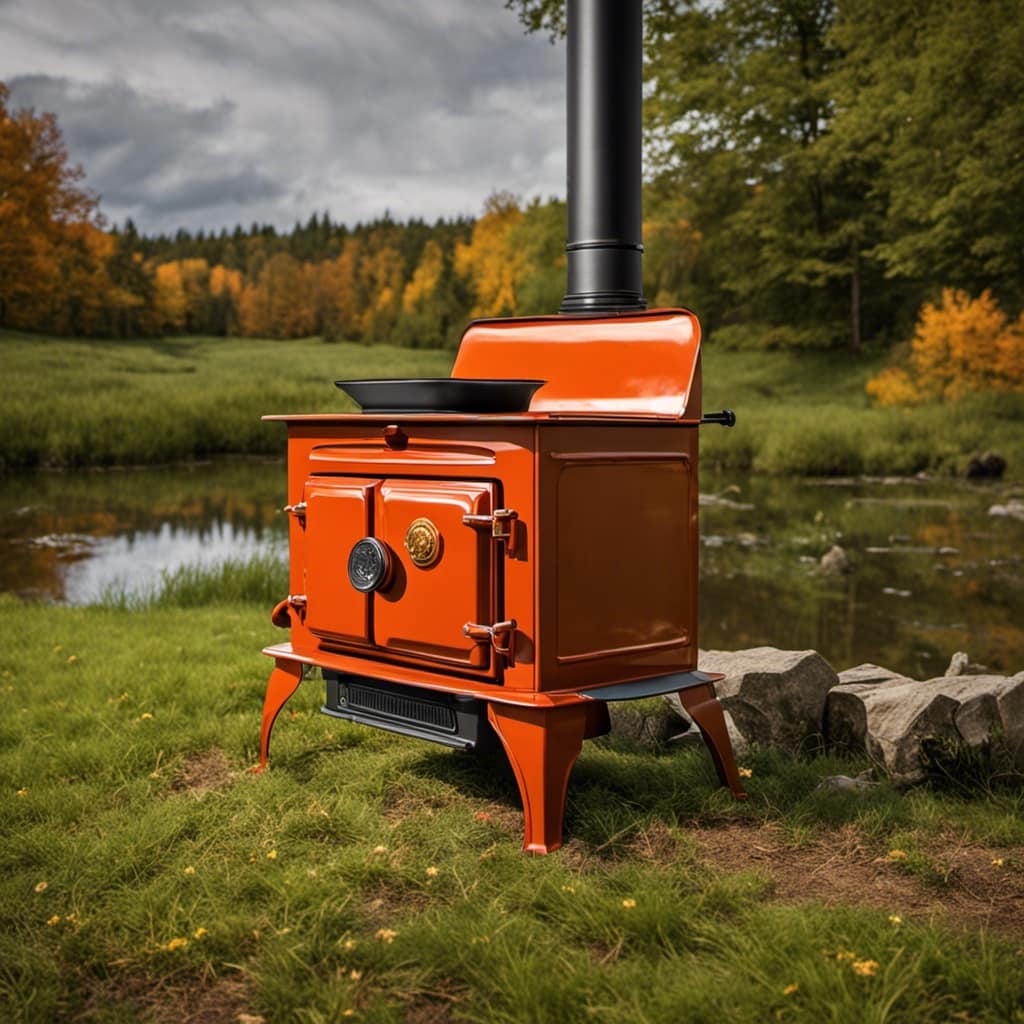
This ability to regulate temperature is essential for achieving optimal burning conditions and preventing overheating. Understanding how airflow control works in a wood stove damper is key to effectively managing the combustion process and ensuring the stove operates efficiently.
Understanding Airflow Control in a Wood Stove Damper
I can control the airflow in a wood stove with a damper. Airflow regulation is crucial for efficient wood stove operation.
The damper plays a vital role in controlling the amount of air that enters the stove, affecting the combustion process and heat output. By adjusting the damper, I can increase or decrease the airflow, thereby influencing the intensity of the fire.
The damper is usually located at the stove’s flue outlet and can be opened or closed using a handle or control mechanism. When the damper is fully open, more oxygen is allowed in, resulting in a hotter, more intense fire. Conversely, closing the damper restricts the airflow, leading to a slower burn and reduced heat output.
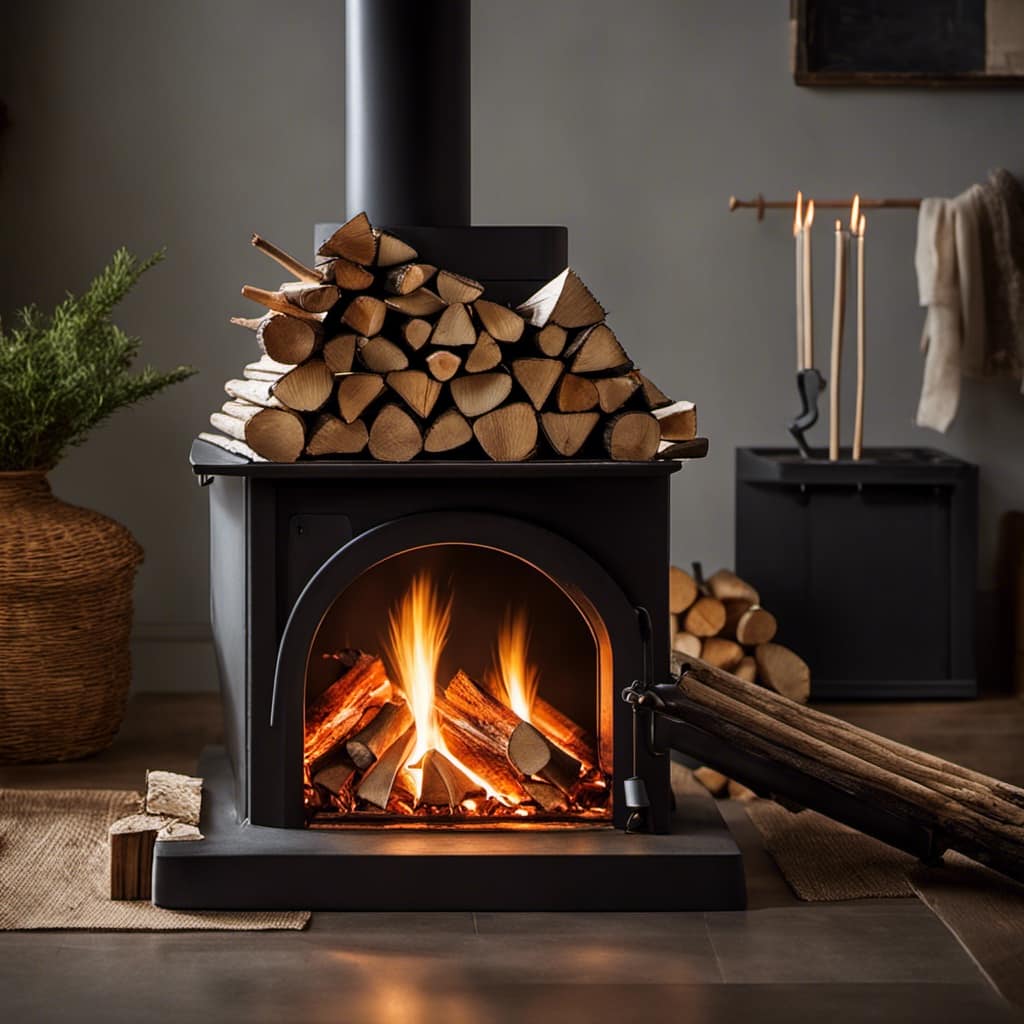
Understanding damper operation is essential for maximizing the efficiency and performance of a wood stove.
Components and Mechanisms of a Wood Stove Damper
When adjusting the damper, I can easily control the amount of airflow entering the wood stove. The working principle of a wood stove damper is simple yet effective. It’s typically located in the flue pipe, just above the stove. The damper consists of a metal plate or flap that can be opened or closed to regulate the flow of air.
By adjusting the position of the damper, I can control the intensity of the fire and the rate at which the wood burns. This is important for maintaining a consistent temperature and maximizing fuel efficiency.
However, if the damper isn’t functioning properly, it can lead to issues such as poor draft or smoke leakage. In such cases, troubleshooting tips include checking for obstructions, cleaning the damper, or replacing it if necessary.
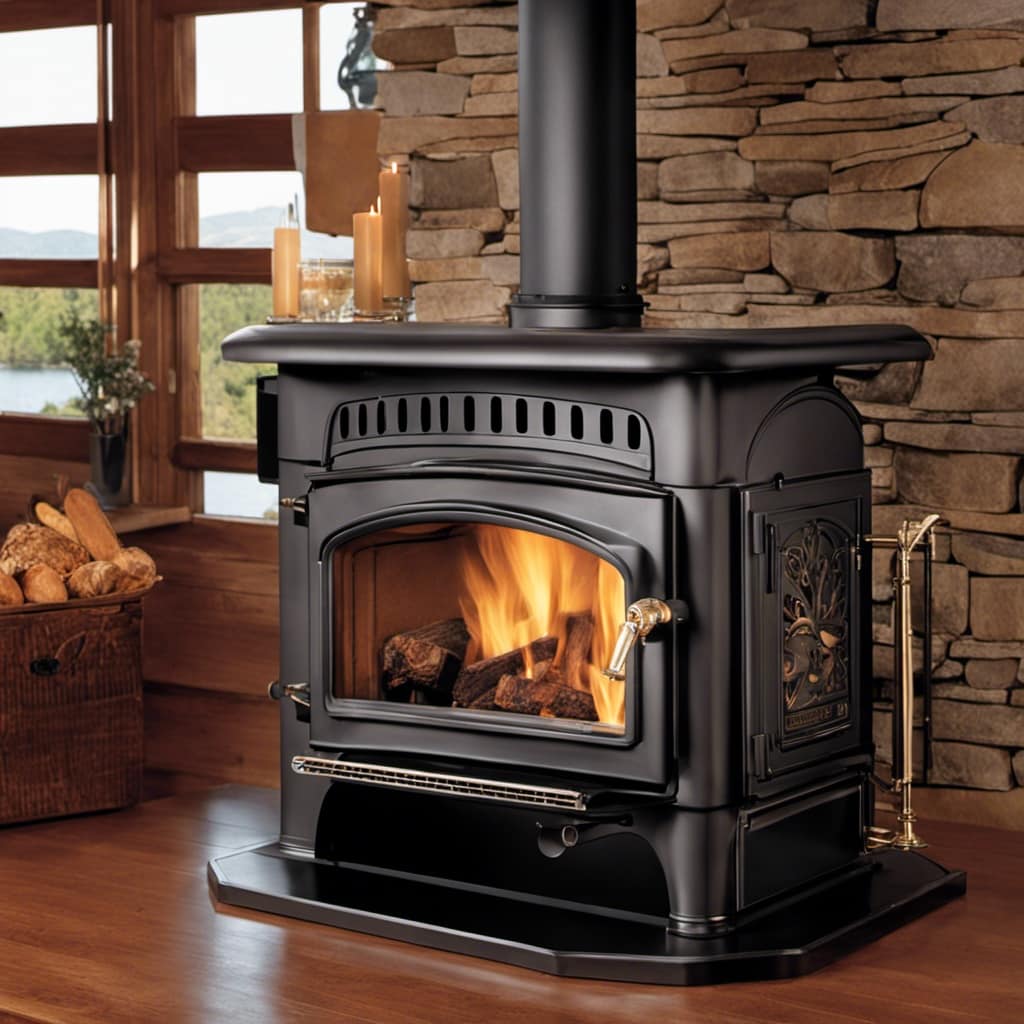
Adjusting Heat Output With a Wood Stove Damper
By adjusting the position of the metal plate or flap in the flue pipe, I can easily control the heat output of my wood stove. The wood stove damper plays a crucial role in regulating the airflow and heat distribution in the stove.
Here are some advantages of using a wood stove damper:
- Improved heat control: By adjusting the damper, I can increase or decrease the amount of oxygen that reaches the fire, thus controlling the heat output.
- Increased efficiency: A properly functioning damper ensures that the fire burns at the desired temperature, maximizing fuel efficiency.
- Reduced smoke and emissions: By controlling the airflow, the damper helps to minimize smoke production and ensures cleaner emissions.
However, there are some common problems with wood stove dampers that can affect their performance:
- Rust or corrosion: Over time, dampers can rust or corrode, causing them to become difficult to adjust or leading to air leaks.
- Creosote buildup: If the damper isn’t regularly cleaned, creosote can accumulate on its surface, hindering proper airflow control.
- Damper seal failure: A worn-out or damaged damper seal can result in air leaks, reducing the damper’s effectiveness.
In the next section, I’ll provide tips for proper use and maintenance of a wood stove damper to ensure optimal performance.

Tips for Proper Use and Maintenance of a Wood Stove Damper
One important tip for maintaining a wood stove damper is to regularly inspect and clean it to prevent creosote buildup. Cleaning techniques for a wood stove damper involve removing any debris, soot, or creosote that may accumulate over time. To troubleshoot common issues, it is essential to check for any obstructions or blockages in the damper mechanism. Additionally, ensuring that the damper is properly aligned and adjusted can help optimize its performance. Here is a table outlining some cleaning techniques and common issues that may arise with a wood stove damper:
| Cleaning Techniques | Troubleshooting Common Issues |
|---|---|
| Remove debris and soot | Check for obstructions |
| Scrub with a wire brush | Ensure proper alignment |
| Use a chimney brush | Adjust damper settings |
| Inspect for creosote buildup | Monitor for excessive smoke |
Frequently Asked Questions
What Are the Different Types of Wood Stove Dampers Available in the Market?
There are several different types of wood stove dampers available in the market. Each type has its own pros and cons. It is important to consider these factors when choosing the right damper for your wood stove.
Can a Wood Stove Damper Be Installed in Any Type of Wood Stove?
A wood stove damper can be installed in certain types of wood stoves. The installation process may vary depending on the design of the stove. It is important to consult the manufacturer’s guidelines for compatibility and proper installation procedures.
How Often Should a Wood Stove Damper Be Cleaned or Inspected?
Inspecting and cleaning a wood stove damper regularly is essential. Signs of a malfunctioning damper include difficulty regulating airflow and excessive smoke. I recommend inspecting it at least once a year to ensure it’s functioning properly.
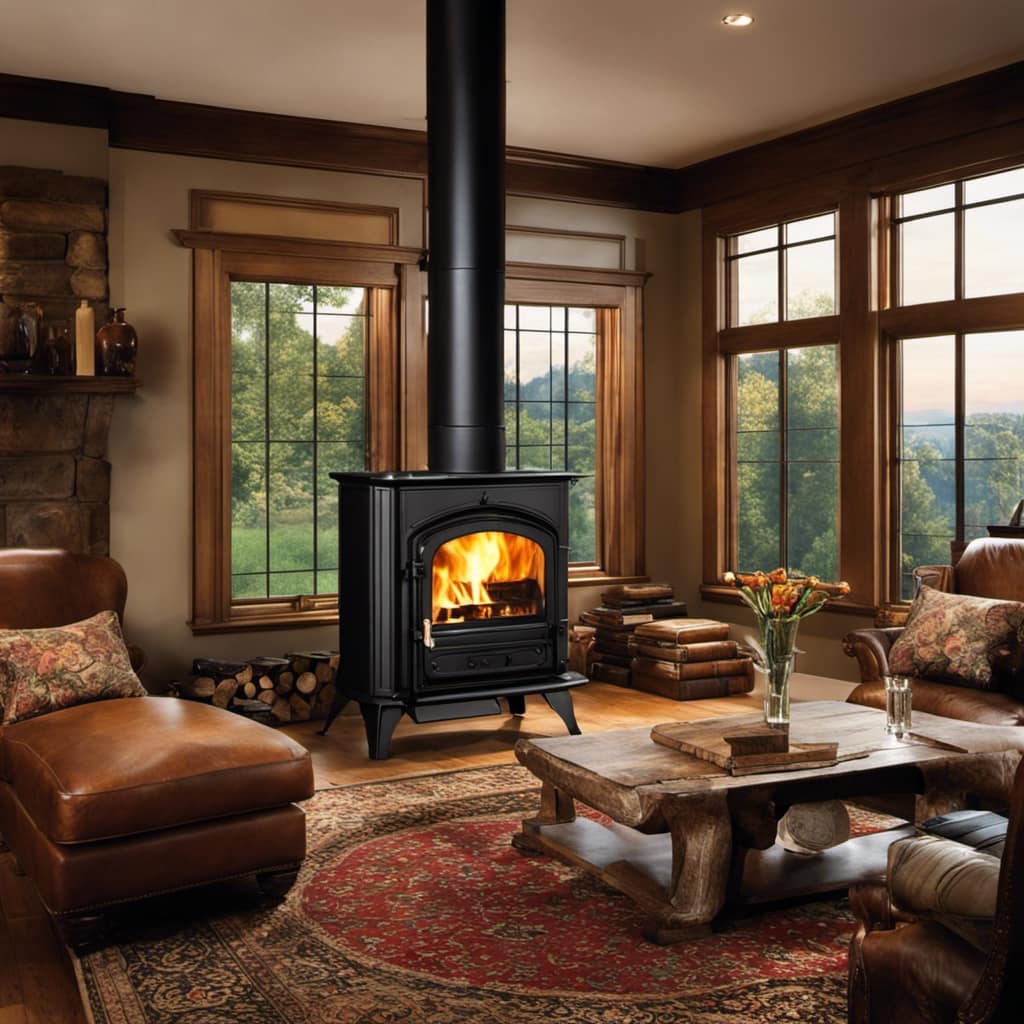
Can a Wood Stove Damper Help Reduce the Amount of Smoke Produced by the Stove?
Yes, a wood stove damper can help reduce smoke production. Properly adjusting the damper allows for better control of air flow, resulting in more efficient combustion and less smoke. However, there are pros and cons to using a damper.
Are There Any Safety Considerations to Keep in Mind When Using a Wood Stove Damper?
When using a wood stove damper, it’s important to consider safety precautions and follow maintenance tips. Safety measures include keeping flammable materials away and regularly inspecting the damper for any signs of damage or blockage.
Conclusion
So, to sum it all up, the wood stove damper is a nifty little device that controls the airflow in your wood stove. It helps regulate the heat output and ensures efficient burning of wood.
Just remember to give it some love and maintenance to keep it working smoothly.
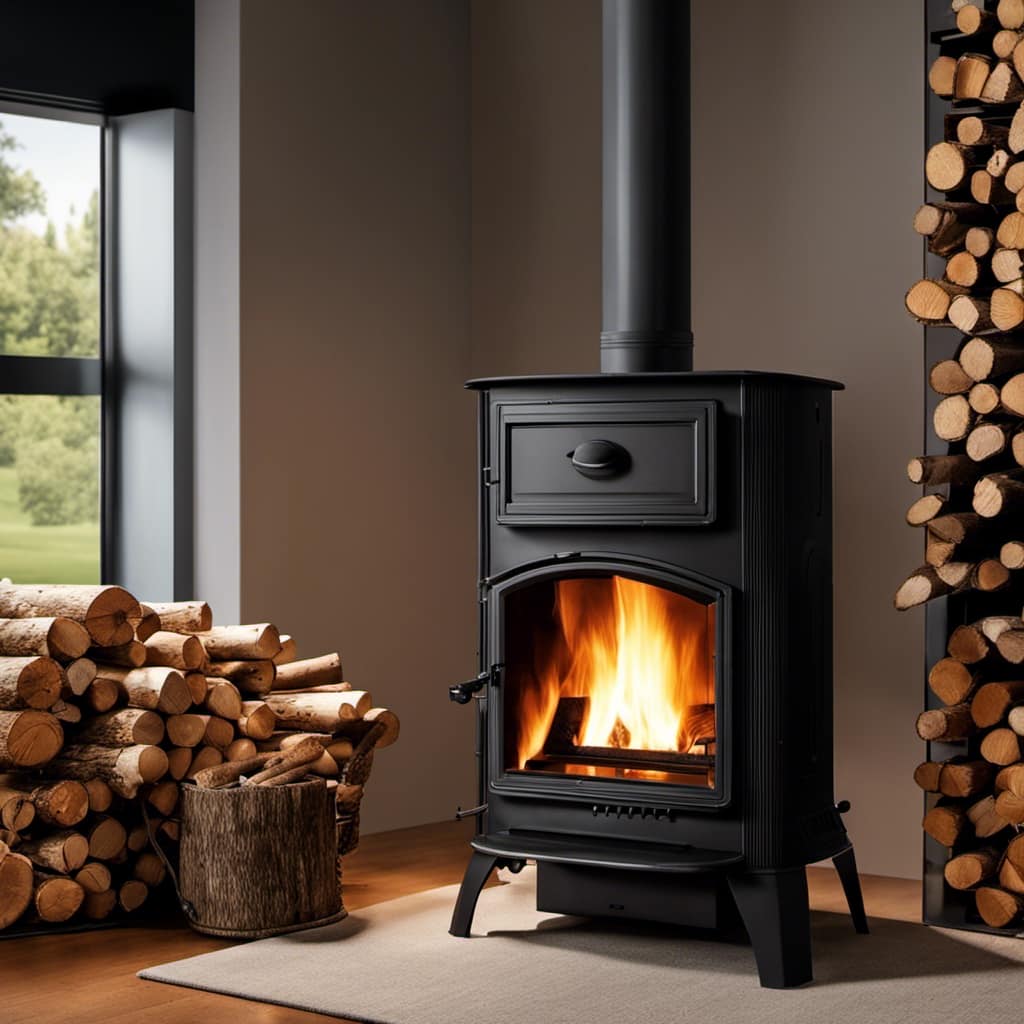
So, next time you cozy up by the fire, give a little nod of appreciation to the humble wood stove damper. It may not be the most glamorous part of your wood stove, but it sure does its job well.
Growing up surrounded by the vast beauty of nature, Sierra was always drawn to the call of the wild. While others sought the comfort of the familiar, she ventured out, embracing the unpredictable and finding stories in the heartbeat of nature.
At the epicenter of every remarkable venture lies a dynamic team—a fusion of diverse talents, visions, and passions. The essence of Best Small Wood Stoves is crafted and refined by such a trio: Sierra, Logan, and Terra. Their collective expertise has transformed the platform into a leading authority on small wood stoves, radiating warmth and knowledge in equal measure.



